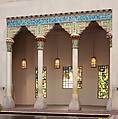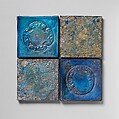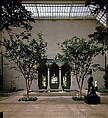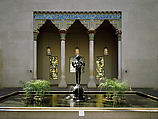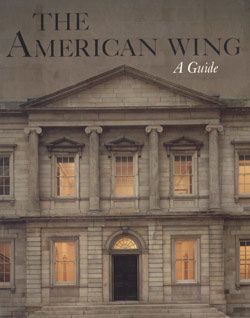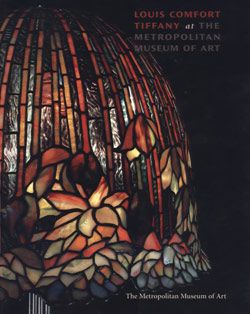Architectural Elements from Laurelton Hall, Oyster Bay, New York
Designed by Louis C. Tiffany American
This columnar screen once served as the entrance to Laurelton Hall, the extraordinary Oyster Bay, Long Island, home that Tiffany designed for himself between 1902 and 1905. The exotic capitals feature flowers (lotus, peony, poppy, and magnolia) in various stages of bloom. The blossoms are composed of glazed ceramic and the stems of tiny slivers of varicolored green glass. Iridescent glass
tiles cover the architrave, and geometric mosaics embellish the supporting corbeled arches, from which three bell-shaped lanterns are suspended.
Laurelton Hall was the crowning achievement of Tiffany’s multifaceted career. After he established the Louis C. Tiffany Foundation in 1918, the estate became the site of a residential summer program for artists. In 1957, it was tragically destroyed by fire. Some architectural elements were salvaged from the ruins, including this loggia.
This image cannot be enlarged, viewed at full screen, or downloaded.
This artwork is meant to be viewed from right to left. Scroll left to view more.
